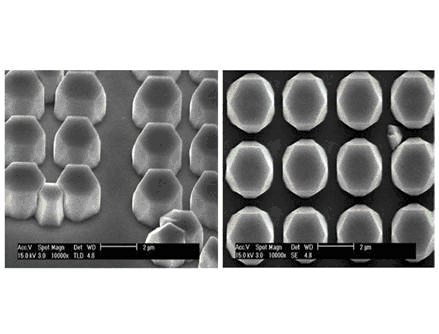User Tools
Sidebar
This is an old revision of the document!
Table of Contents
III-V Materials
A Compound semiconductor is a semiconductor compound composed of elements from two or more different groups of the periodic table. blah blah
Optical properties of GaAsSb
It is very important to understand the electronic structure of GaAs and GaSb for fabrication of electronic and optoelectronic devices. Recently, tenary compounds, GaAs1-xSbx began to attract much attention from researchers because they were synthesized and expected to be new materials for optoeletronic devices. For x = 1 and x = 0, there have been a lot of computational studies to investigate their structural, electronic and optical properties, but few studies for general cases. Moreover, it has been known that “regular” density functional calculations does not describe the correct electronic structures including underestimated band gap and incorrect band splitting. To resolve such issues, we consider spin-orbit coupling effects and GW corrections on GaAs1-xSbx with the composition of x = 0, 0.25, 0.5, 0.75, and 1. To calculate their band structures, we make use of maximally localized Wannier functions to interpolate GW quasiparticle band structures. Based on our GW calculations, we discuss the trend of band gaps at various high symmetric points in the Brillouin zone with the composition x.
Latent Order in High-Angle Grain Boundary of GaN
We report the existence of latent order during core relaxation in the high-angle grain boundaries (GBs) of GaN films using atomic-resolution scanning transmission electron microscopy and ab initio density functional theory calculations. Core structures in the high-angle GBs are characterized by two pairs of Ga-N bonds located next to each other. The core type correlates strongly with the bond angle differences. We identify an order of core relaxation hidden in the high-angle GBs by further classifying the 5/7 atom cores into a stable 5/7 core (5/7(S)) and a metastable 5/7 core (5/7(M)). This core-type classification indicates that metastable cores can exist at real high-angle GBs under certain circumstances. Interestingly, 5/7(M) exhibits distinct defect states compared to 5/7(S), despite their similar atomic configurations. We investigate the reconstruction of defect states observed in 5/7(M) by analyzing the real-space wave functions. An inversion occurred between two localized states during the transition from 5/7(S) to 5/7(M). We suggest an inversion mechanism to explain the formation of new defect states in 5/7(M).
- Latent Order in High-Angle Grain Boundary of GaN
Sangmoon Yoon, Hyobin Yoo, Seoung-Hun Kang, Miyoung Kim, and Young-Kyun Kwon, Sci. Rep. 8, 4647 (2018).
link:
 download:
download: 


Morphology transformation of faceted GaN microcrystals

We have studied the growth and characterization of patterned and
uniformly distributed GaN microcrystals with well-defined facets and
epitaxy. The microcrystals were grown on a mask pattertned by
lithography, and formed by selective-area epitaxy using metal-organic
chemical vapour deposition. The GaN microcrystals have similar sizes
and shapes. Each microcrystal consists of an upper and lower part,
which are rotated by 30 deg. Transmission electron microscopy shows
that there is a rather clear interface between the two parts of the
crystal, suggesting a sudden change in the growth direction. We
performed ab initio calculations for the surface energies of
hexagonal GaN, and the growth morphology is explained based on surface
energy consideration.
- Morphology transformation of patterned, uniform and faceted GaN microcrystals
Tae Woong Kim, Young Joon Hong, Gyu-Chul Yi, Ji-Hwan Kwon, Miyoung Kim, Heung Nam Han, Do Hyun Kim, Kyu Hwan Oh, Ki-Jeong Kong, and Young-Kyun Kwon, J. Phys. D: Appl. Phys. 41 (1), 015406 (2008).
link: download:
download: 


